Epistylis is a disease commonly confused with ich. It can look almost identical to ich. Epistylis is typically fuzzy and translucent while ich is clearly defined and very white. Epistylis stick out from the fish while ich only slightly protrudes from the fish. Epistylis is commonly found secondary to a bacterial infection.
I recommend treating epistylis with:
- Feed an antibiotic like Kanaplex or Maracyn 2 in the food and ONLY in the food
- Dropping the aquarium temperature to 70 degrees
- Add a ton of aeration to the aquarium
- Feed the antibiotic laced food very lightly till the infestation clears
- If there is any possibility that it is ich or a mixed ich/epistylis infection add a formaldehyde/ malachite green medication like Ich-X to the water
Epistylis is commonly confused with ich. Here is a list to prevent confusion between ich and epistylis:
| Ich | Epistylis |
|---|---|
| Uniform round size | Varying rough sizes |
| Pure ceiling white | Translucent gray/white |
| Flat against fish | Sticks out into water |
| All fish surfaces will have dots | Patchy coverage on fish |
| Rarely on the eyes | Common on the eyes |
| Rarely kills | Commonly kills rapidly |
The following is an actual comment on a Facebook forum:
“I’m devastated. I bought 6 cardinal tetras from Petco and stupidly didn’t quarantine before adding them to my 55 gal planted community tank. I have now lost 30 fish to ICH. 😭 I had a large school of neons, 6 guppies and a sorority of female Bettas. All gone save for 1 Betta and 2 Otto’s, but I fear they will soon die too. 😭 I’m treating the tank with the Kordon Ich attack and heat, but I fear I caught it too late. 😭“
This is a photo they provided:
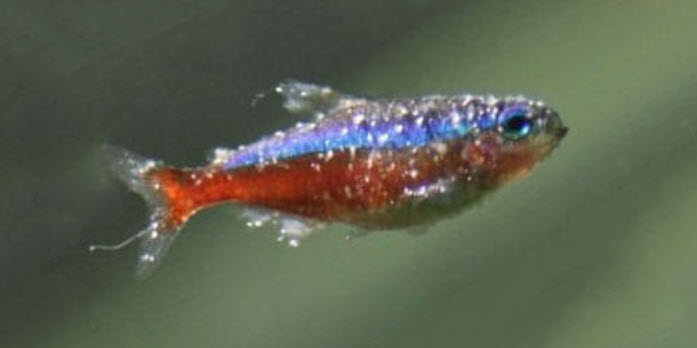
This unfortunate person’s fish did NOT die from ich. They died from a bacterial infection with secondary epistylis. The white spots are irregular in size, on the eyes, stick out into the water, and the fish are all rapidly dying in an established aquarium. All of these are the hallmarks of bacterial infection (probably columnaris) with a secondary epistylis infection.
The bacteria attack the fish both internally and externally. It is the internal bacterial infection which will kill the fish. The external bacterial infection sheds bacteria which feed the epistylis. Killing the external bacteria will not save the fish from the lethal effects of the internal infection.
What follows is a very lengthy and boring paper on epistylis. Read on only if you are a real aquarium nerd like the author.
Epistylis in Depth
Epistylis is a very common opportunistic organism found in small quantities in most aquariums and on many fish (Diana Walstad researched it and found it was found on most fish by pathologists). It is a single celled ciliated protozoan closely related to paramecium and tetrahymena. A single epistylis is too small to be seen by the naked eye but epistylis grows in branching, stalked colonies which can become relatively large, up to three times the diameter of an ich spot.
Epistylis is an opportunistic organism which feeds on bacteria in the water column and generally, but not always, simply uses the fish as something to hold onto. Sometimes, if an aquarium is heavily overfed, the bacteria in the water column becomes so numerous that it feeds epistylis on the glass of the tank. Little white dots of epistylis colonies will appear in patches on the aquarium glass.
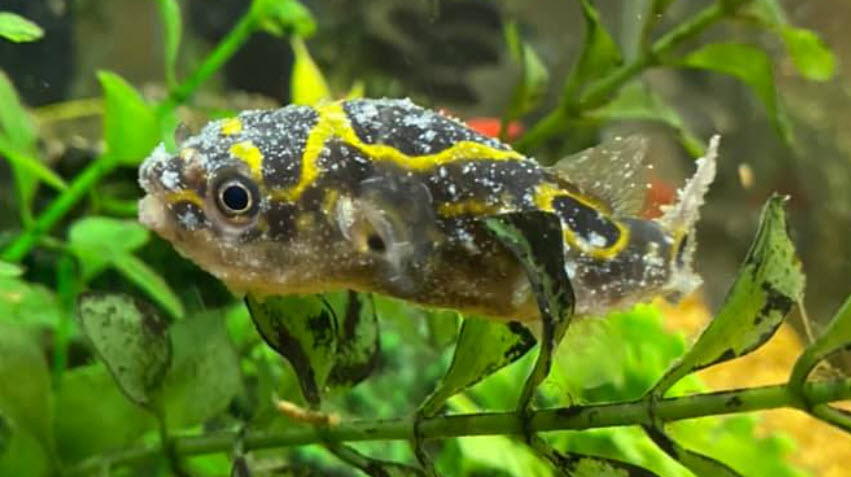
Sometimes the epistylis on a fish exists in a symbiotic relationship with a gram negative bacteria. The bacteria and the epistylis attack the skin of the fish in concert. It is often unclear whether the primary attacker is the bacteria or the epistylis but it is unimportant. What is important is that virtually all epistylis infections should have antibiotics put in the food to kill the bacteria.
The size of individual colonies of epistylis is quite variable. The organism itself is much smaller than the ich organism. So epistylis can appear like a light dusting on a fish. Well intentioned but ill-informed commentators on the social media often identify this as “velvet”. It isn’t. It is something called “small colony epistylis”. It is very difficult to differentiate this from costia and chilodonella. Note “velvet” has distinct golden color so it is easily differentiated from epistylis.
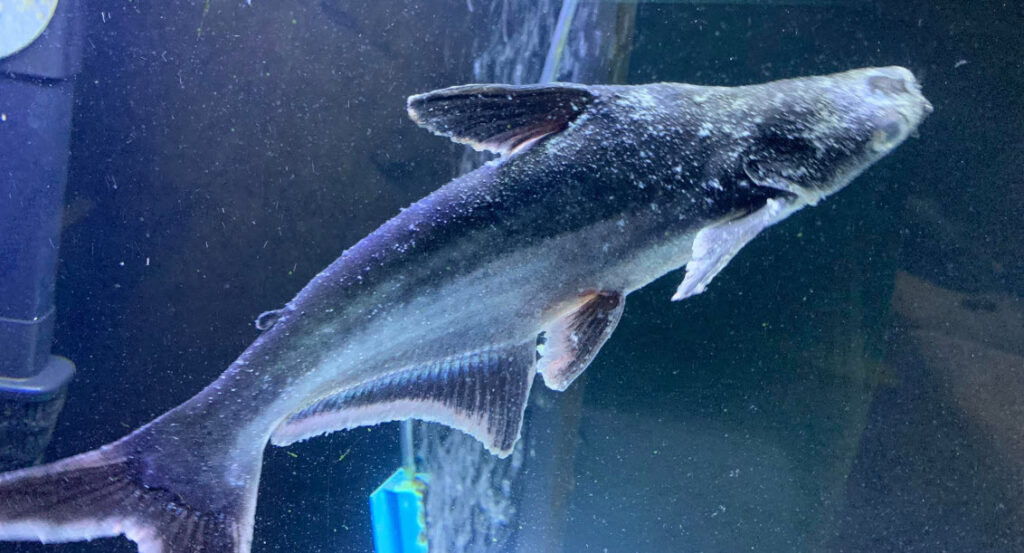
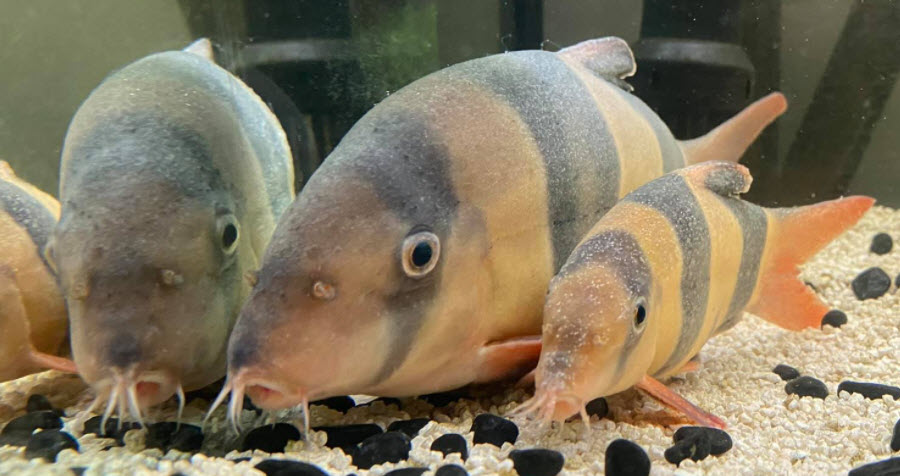
Epistylis and Ich
Whenever a good photo of any fish disease comes up on social media we make a screen capture of it for reference. We number these screen captures. We have 97 screen captures of what is clearly epistylis and 49 screen captures of what is clearly ich. So epistylis appears to be more common in home aquariums than ich. Note we also have about 35 photos which could be epistylis or could be ich. The only way to tell for sure is to take a scraping and examine it under a microscope. This is why we recommend any questionable diagnosis be treated for BOTH ich and epistylis.
The photo below is a fish with ich. Note how ich is a very well defined, very white spot which does not stick out much from the fish. Ich is the size of a grain of salt, no larger and no smaller.
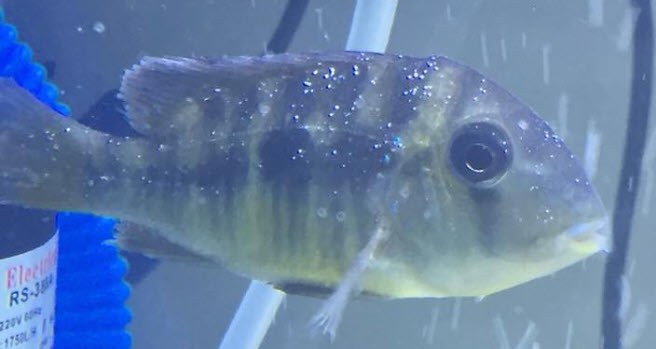
The appearance of epistylis on loaches is virtually identical to the appearance of ich and is the source of a lot of confusion. If a hobbyist has loaches, goldfish or other bottom dwellers who have a persistent case of “ich”, treat the fish with antibiotic laced food. It won’t hurt them and you might save the fish.
Here is a photo of a loach with epistylis. Note how much it looks like ich.
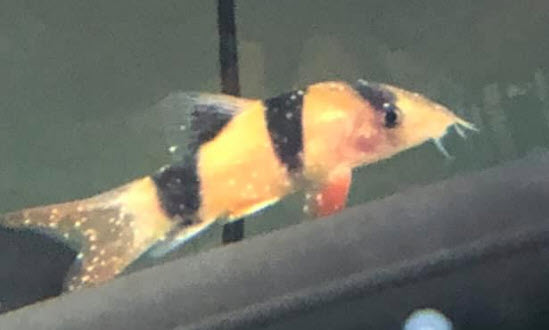
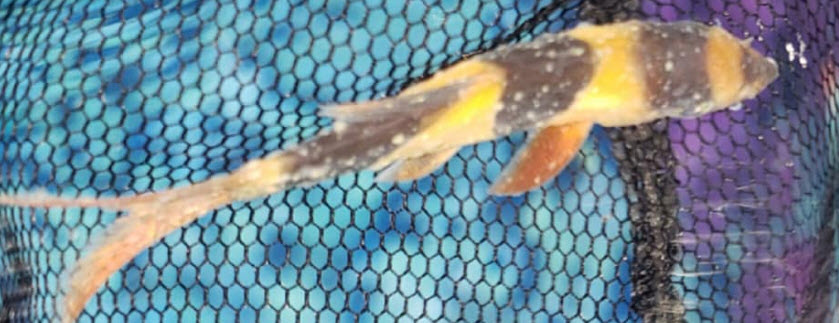
Note the growths on the eyes of this fish. Ich only rarely appears on the eyes of the fish and is a very white round dot when it does appear on the eye:
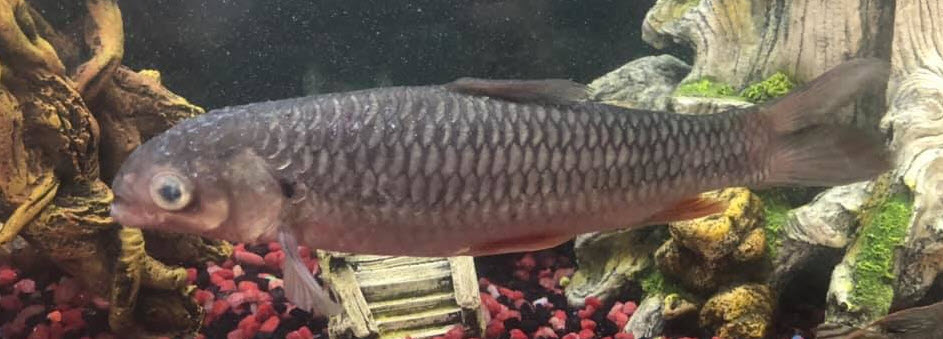
Symptoms
Epistylis is small to large gray or white spots on the fish. Whenever a post with a picture of a fish with epistylis posts on social media there is an avalanche of posts identifying the culprit as ich. Ich and epistylis are easy to get confused. Here are some examples of epistylis that could be mislabeled ich very easily:
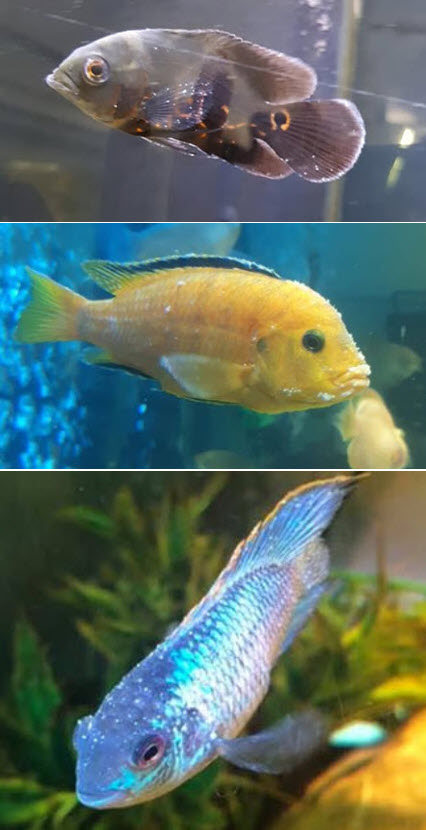
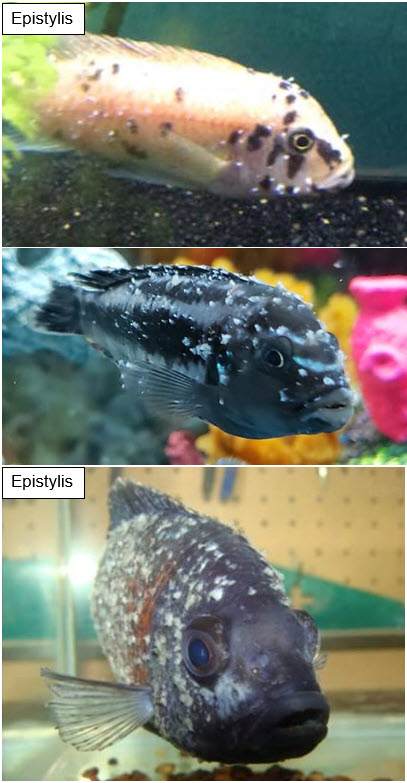
Epistylis seems to attack loaches, goldfish and bottom dwellers preferentially, especially in tanks with little water circulation and/or poor aeration. This may be due to a higher bacteria concentration near the substrate, especially if there is a bottom mulm present. When loaches get epistylis always look hard at the aeration and water circulation in the aquarium.
Adding two small wavemakers is always a good option for larger aquariums. Add one at the back of one side aimed at the surface so as to give lots of “choppy waves”. A large area of “choppy waves” is probably the best way to add aeration, with lots of bubbles from a decent sized air pump and air stones being a close second. Add the other wavemaker to the bottom middle of the other side of the aquarium aimed at the substrate at the front of the aquarium to clear any mulm present. This sets up very good circular current in the aquarium.
Goldfish seem to be especially prone to bacterial infections followed by epistylis. Here are some goldfish with bacterial/epistylis infections:
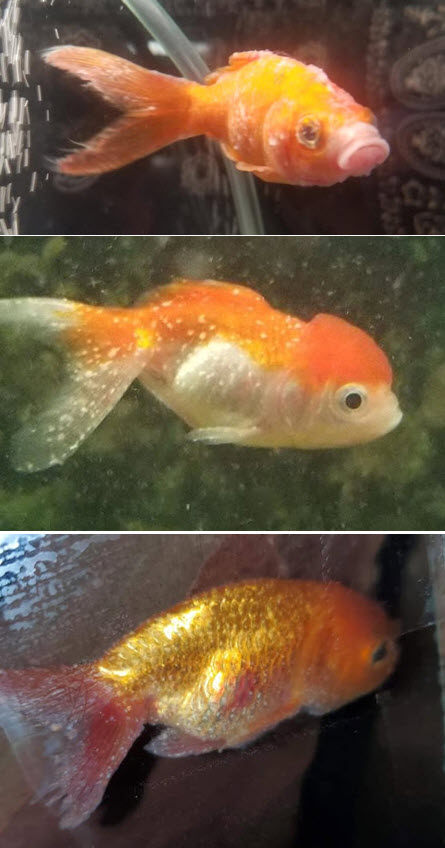
Here is a goldfish with both hemorrhagic septicemia and epistylis:
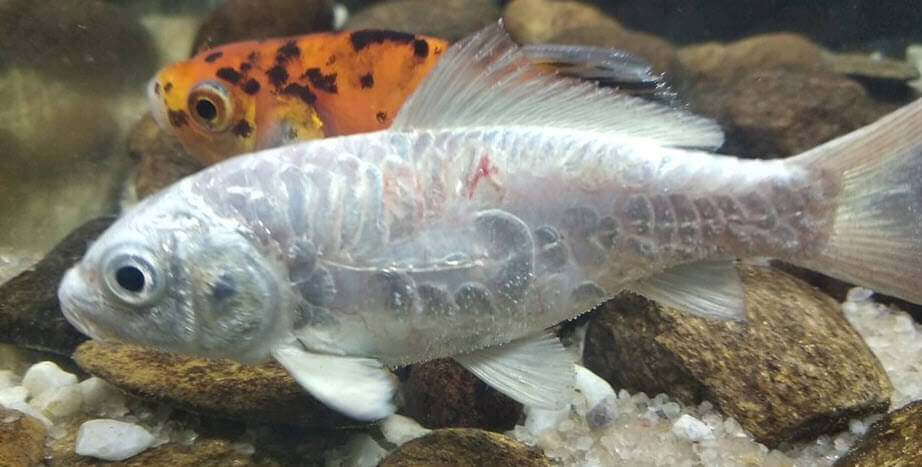
This is another fish with both epistylis and hemorrhagic septicemia (“red blotch disease”)
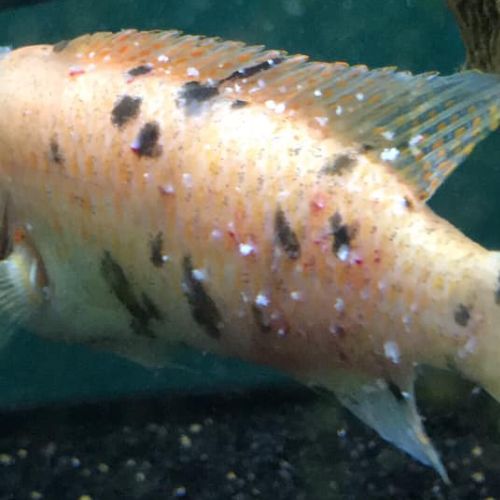
Epistylis often occurs in fish with fin rot. The bacteria (generally columnaris) infecting the fins are feeding the epistylis. Many think the “white spot” on the fins are causing the erosion of the fins. It is actually the other way around. The erosion of the fins is causing the white spots. Here are two goldfish with fin rot which also have epistylis (note the spots on the eyes).
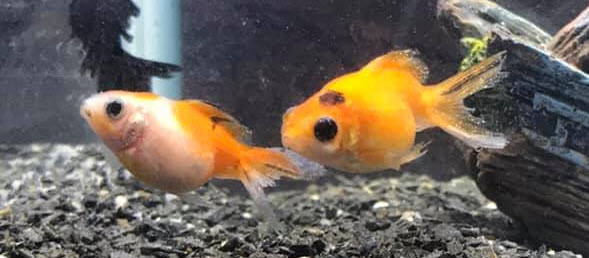
Causes of Epistylis
There are several causes of epistylis:
- The water has a high bacteria count in it because of poor filtration, over feeding and/or poor aeration in the aquarium.
- Bacteria are invading the fish, either as a generalized infection with no symptoms, hemorrhagic septicemia (“red spot”, generally aeromonas), slime coat syndrome or as fin rot (generally columnaris).
- The aquarium has a bacteria rich mulm just above the substrate caused by poor aeration and poor water circulation.
- The aquarium has a large substrate such as pea gravel where food is trapped in the substrate. This rotting food will cause huge bacterial problems with bottom dwelling fish like loaches, which in turn causes big problems with epistylis.
- If the water has a high bacteria count and the epistylis gets a foothold on a fish, then the epistylis secrets an enzyme at its base which attacks the slime coat of the fish. This attack allows bacteria into the body of the fish, creating hemorrhagic septicemia which further feeds the epistylis. This sets up a vicious cycle which can kill the fish.
Epistylis is typically an outward sign of a serious bacterial infection. Fish with epistylis commonly die very rapidly, not from the epistylis, but rather from an internal bacterial infection.
Hobbyists seem to have difficulty with the idea of two pathogen being on a fish at once. A very common combination seen in fish is when a bacteria attacks the skin of the fish, causing “slime coat syndrome”. Then secondary epistylis attaches to the fish and begins to feed on the bacteria being shed by the skin infection. The following fish has slime coat syndrome with secondary epistylis.
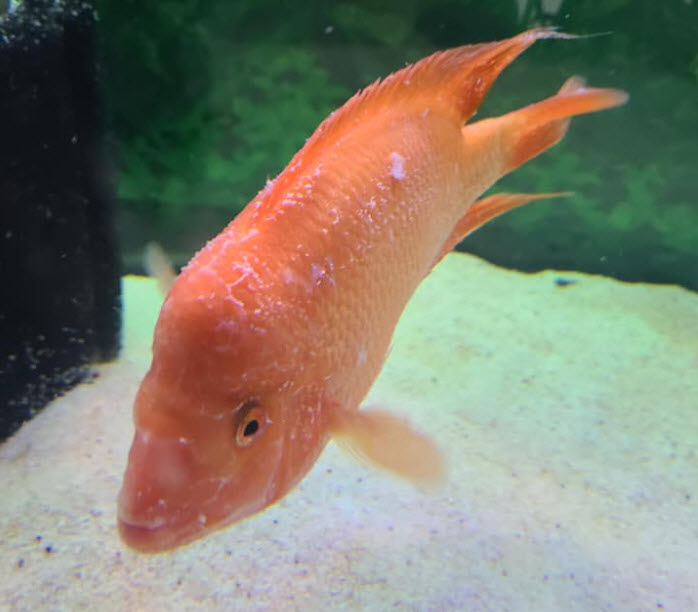
But epistylis CAN occur without an underlying bacterial infection. The following photo is instructive. This is a molly (a livebearer!) with a clear case of epistylis. The fish had survived six days when this photo was taken. This does NOT seem to be a bacterial infection of the fish with secondary epistylis. Rather the water is cloudy and the water surface is a solid mat of bubbles. This would indicate a high bacteria count in the water and the epistylis is merely feeding off the bacteria in the water. The only thing that will help this fish is to add a ton of biofiltration.
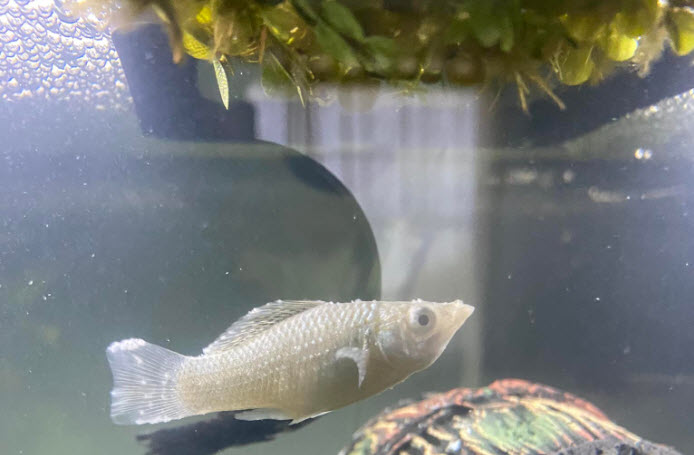
Mortality Between Ich and Epistylis
The combination of bacteria with secondary epistylis kills fish relatively rapidly and frequently. Ich rarely kills tropical fish.
A survey was done on ich. The members of about ten Facebook aquarium groups were asked: “Of the cases of ich that YOU have had in YOUR aquariums, how many fish died?”. There were about 70 replies. Three of the replies had fish which died. All these three instances were where new fish were added to an aquarium. All the rest of the replies had no fish deaths, including one keeper with 200 aquariums for 30 years and one who had many aquariums for fifty years. This is very revealing. Ich is just rarely fatal in the home aquarium.
So if one has an aquarium where fish are dying left and right from what appears to be ich it is often not ich, but rather “columnaris” (more properly called a bacterial infection) combined with epistylis. The “columnaris” typically has no symptoms at all (it could well be any one of dozens of bacteria, columnaris being only one). The distinction is important, especially as ich is often treated with higher water temperatures (incorrectly I might add, research says higher temperatures are not effective in treating ich). Columnaris bacteria and epistylis thrive at higher temperatures so using high temperature to kill what appears to be ich only insures the fish die.
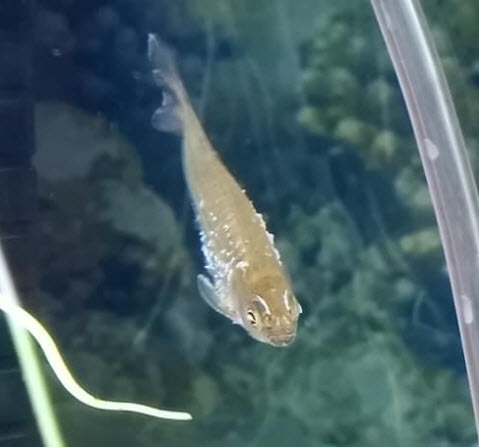
I’m not big on anecdotal evidence but a comment from Facebook is pertinent here:
Tiffany Peterson “My rasboras had what I thought was ich, except I treated with Ich-X and daily water changes literally the very same day symptoms showed and after four days of no change, they started dying… I ended up treating for ich for 10 days total with no benefit, lost half of my school, nine fish. Eventually a fish store diagnosed it as epistylis, said there’s no way ich would act that way (the white dots never ‘fell off’ like ich is supposed to) and not respond to ich meds. Literally the first day I used the erythromycin the fish looked better. The survivors had gotten to the point where they were basically transparent from stress except for the white dots, they wouldn’t swim or eat…just hovering in place. One course of antibiotics, much better and back to perfectly normal after two courses (four doses). Did a third for good measure and started feeding antibiotic flakes at that point too.”

Treatment
Most epistylis cases can either be ich or be epistylis. The two are so similar that often the “white spots” could be either disease. So I recommend treating with a formalin/malachite green medication like Ich X in the water AND antibiotics like Kanaplex or Maracyn 2 in the food.
Epistylis occurs very frequently in newly set up aquariums with “dull” water and inadequate filtration, poor water circulation, over-feeding and poor aeration. Very often the best treatment for epistylis is to considerably reduce or even stop feeding for a while, add some very good filtration, add some wavemakers to circulate the water and add a ton of aeration. Proper food levels (the volume of two eyeballs once per day MAXIMUM, six fish = twelve eyeballs), over-filtration, over aeration, good water circulation and crystal clear water should be the goal of all hobbyists in order to have healthy fish.
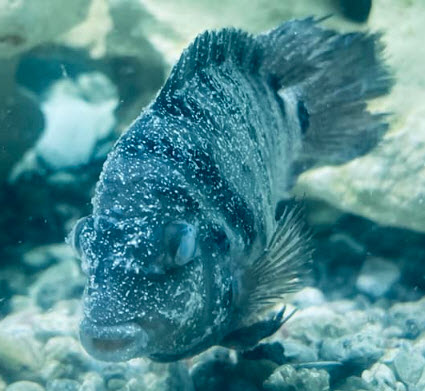
Any aquarium with epistylis should be thoroughly cleaned of all mulm and detritus in the aquarium. The filter should NOT be cleaned. Filters filled with brown detritus have millions of tiny organisms in them that literally “eat” bacteria in the water column. Thus a filter filled with brown mulm will hugely reduce the number of free floating bacteria feeding the epistylis.
I do not like cartridge hang on back or cartridge internal filters. Epistylis is very commonly associated with these cartridge filters. If one has a cartridge filter improve it by adding the sponge or pot scrubbers recommended in this link:
And several 95% water changes are in order over the span of a few days. Note 95% water changes do not harm the fish, contrary to popular mythology. Also note that antibiotics in the water column will only kill bacteria in the water column for a few hours. Then the antibiotic actually feeds a bacterial bloom. And note epistylis eat dead bacteria just as avidly as live bacteria.
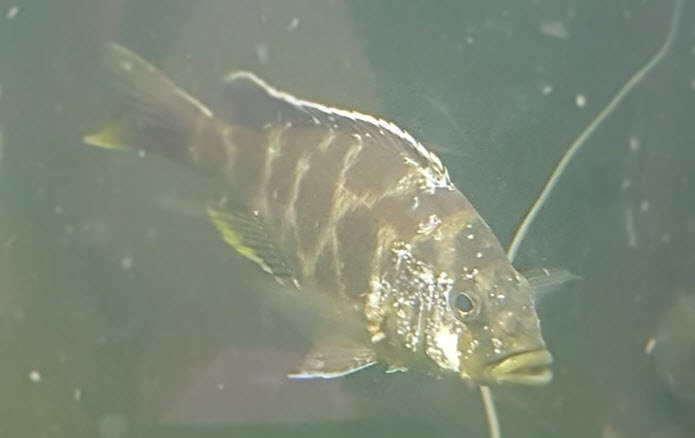
Note I have noticed some newcomers to the hobby who just don’t seem to understand what good water aeration and water circulation are. They come on social media with a picture of several sick fish hanging near the surface of some water whose surface is dead still, with no “choppy waves” and only a few bubbles coming from an undersized air pump working a tiny cartridge internal filter. When told they need better water circulation, better biofiltration and better aeration the typical response is “But I have lots of bubbles and a filter“.
For small aquariums I like the Sunsun HW-603B External Canister Filter ($40). It has 80 cubic inches foam which makes a great biological filter if you only very lightly clean it once every four to eight months (ignore the profit minded directions which say to replace the foam). Also I like under gravel filters. If you clean under-gravel frequently, they are a pain in the butt and do not work well. If you just leave them alone, they are a great inexpensive filter. If you use a sponge or an under-gravel power them with a powerhead rather than bubbles and you will triple the filtration capacity.
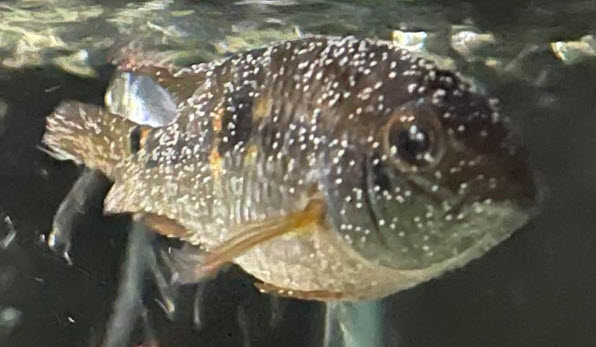
A little anecdotal evidence might be somewhat useful here. This is a comment from Brian:
“Last November, I was treating my tank for ick and desperately trying to save my fish based on internet postings that all contained conflicting information. After losing all 5 of my 8 yr old clown loaches, I stumbled across your website that made it clear I didn’t have ick but had epistylis and me and my tank conditions were to blame.
I replaced the media in my filters with foam, changed out my substrate from pea gravel to a finer gravel, stopped my occasional vacuuming of the gravel, stopped feeding my fish so much, and quit cleaning my filters. These changes have drastically cut down on my maintenance and completely transformed my tank into a beautiful centerpiece with crystal clear water, healthy plants, and healthy fish.”
Brian had epistylis because of the conditions in his tank. When he corrected the conditions things improved immensely.
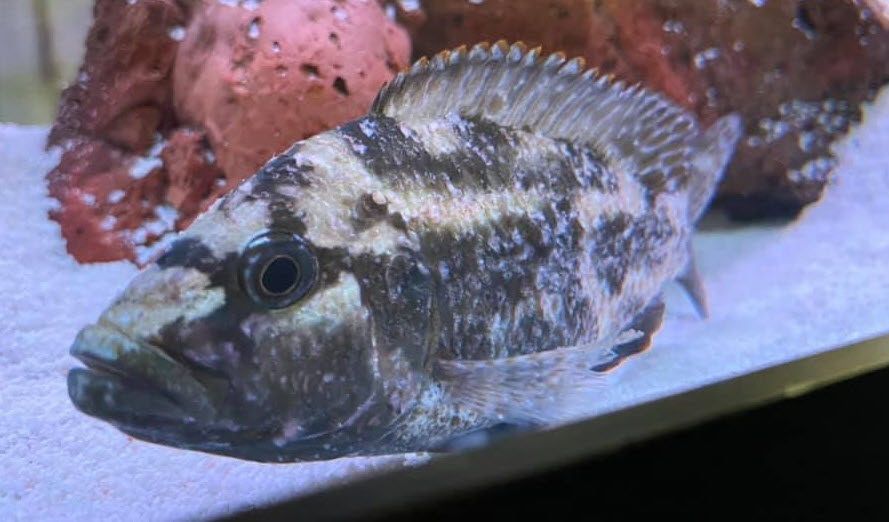
Medication for Epistylis
Epistylis does not feed on the fish. It feeds on the bacteria in the skin mucus of the fish and in the water column. Epistylis is commonly accompanied by pathogenic gram-negative bacteria either as fin rot, slime coat disease or septicemia. The generalized symptomless bacterial infection, fin rot (typically columnaris bacteria) or hemorrhagic septicemia (small red areas of blood beneath the skin that are caused by aeromonas bacteria) are typically the organisms which kill the fish, not the epistylis. So it is important to treat the fish with a broad spectrum antibiotic IN THE FOOD AND ONLY IN THE FOOD.
Bacterial diseases need to be hit with a broad-spectrum antibiotic. These need to be obtained from the internet. They include Thomas Labs Fish Mox, Midland Vet Service Aqua-Mox, VetDepot Amoxicillin, SeaChem KanaPlex, Fishbiotic Ampicillin, Mardel Maracyn 2, Thomas Labs Fish Min and Thomas Labs Fish Doxy. They are ONLY effective when mixed with the food (contrary to manufacturers profit driven instructions).
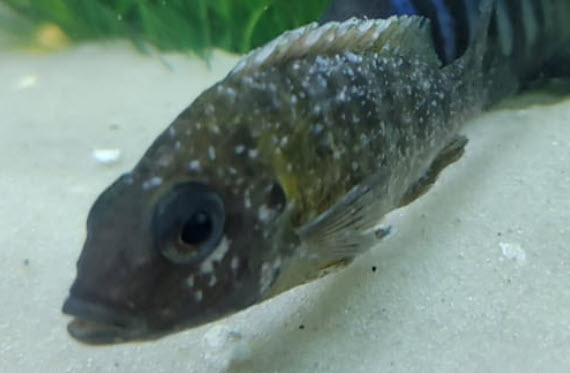
It is easy to make medicated food. Heat 1/4 cup water (two ounces or 58 milliliters, not a lot) in the microwave. Then blend one 1/4 ounce of plain animal derived gelatin (Knox gelatin, one envelope) into the hot water with vigorous stirring. Take two tablespoons of dry commercial fish food (pellets or flake) and mix it with just a little of the hot water/ gelatin mixture. Add hot water/gelatin until you get a paste like consistency. If it gets too watery just add more food.
Then add just a “smidgen” (roughly 1/16 teaspoon, a 1% to 2% addition) of medication to the mud. If you are using a packet of medication, take just a “smidgen” of the packet contents. Mix and mash the whole mass thoroughly. Mix and mash the whole mass thoroughly. Spread it out into a pancake about 1/8th inch (3 mm) thick on a plastic film or a plate. Then put in the refrigerator. If you plan on keeping it for more than two weeks put it in a small plastic bag and freeze.
Feed this medicated food and only this medicated food to all the fish in the aquarium for at least ten days. If it hasn’t resolved itself, try another antibiotic which is effective against gram positive bacteria. Note this gel food is 80% water. So it will require ten eyeballs per day of food per fish (six fish = 60 fish eyeballs = six times ten).
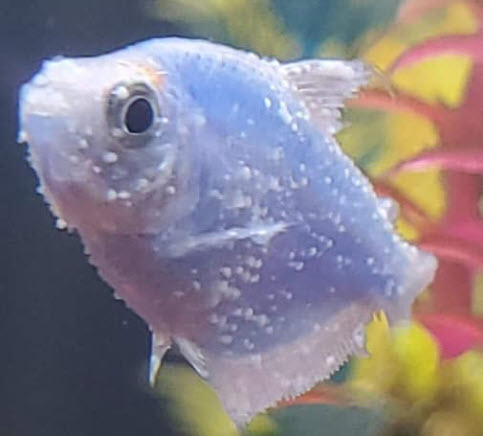
Treating Epistylis Directly
Epistylis is distantly related to ich and, according to the literature, is susceptible to copper or formalin/malachite green just like ich. But note the author’s experience says that epistylis does not readily respond to ich medications.
But if fish have white spots which might be ich or might be epistylis (a very common occurrence!), it will not hurt the fish to put a formalin/malachite green ich medication like Ich X in the water and to feed the fish medicated food. Probably 50% of the cases of “white spots” should be treated as though both ich and epistylis are present.
There is research which says a 1.5 to 2% salt bath (3.5% is the salt concentration of the ocean), repeated every 24 hours is effective.
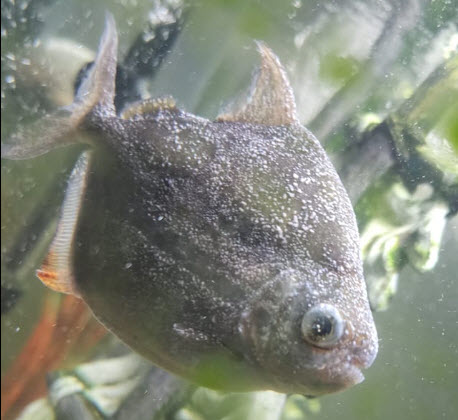
The treatments consisted of three therapeutic baths performed every 48 hours for 20 minutes with different concentrations of common salt: 0.0%, 1.0%, 1.5% and 2.0%. The experiment lasted six days. Twenty-four hours after the last bath, the fish were sampled to check for the presence of the parasite and blood collection. Salt treatments of 1.5% and 2.0% were effective in eliminating parasites in 82% and 78% of treated fish, respectively. Fish subjected to the 2.0% salt bath showed higher hematocrit and hemoglobin values (P <0.05) compared to fish in the control group, in addition to changes in leukocyte values. Common salt can be used to control Epistylis sp. in naturally infected surubim juveniles.
“Use of Common Salt (NaCl) in the Control of Epistylis sp. in Hybrid Sorubim”. Rodrigues et. al. 2019:
Put the fish in a 1.5 to 2% salt bath for up to twenty minutes. Watch the fish carefully. Different fish have much different tolerances for salt at this level. When the fish loses equilibrium and rolls over, quickly return them to fresh water.
A liter of water is 1,000 grams. There are 5.69 grams of salt in a level teaspoon of salt. So a 1.5% solution is about 3 level teaspoons of salt per liter of water. Or 10 level teaspoons (roughly one fourth cup) of salt per gallon of water in a tray.
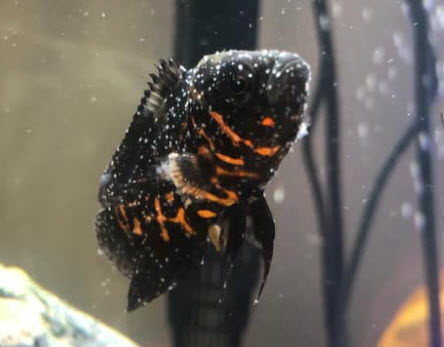
Treating Epistylis Indirectly with a “Mature” Filter
A “mature” filter full of brown gunk is a very good “treatment” for epistylis. The reasoning behind this is a somewhat lengthy cause and effect chain but the logic is sound, even if there is no research backing it.
The epistylis organism is present in almost all tanks feeding on bacteria in the water. When the bacteria count in the water gets high, such as when a new tank and new filter are set up, epistylis can proliferate and end up on the fish. Once on the fish it can become pathogenic and erode the protective coating on the fish’s skin. This allows pathogenic bacteria to enter the fish’s body and start septicemia. Alternatively the septicemia can come before the epistylis.
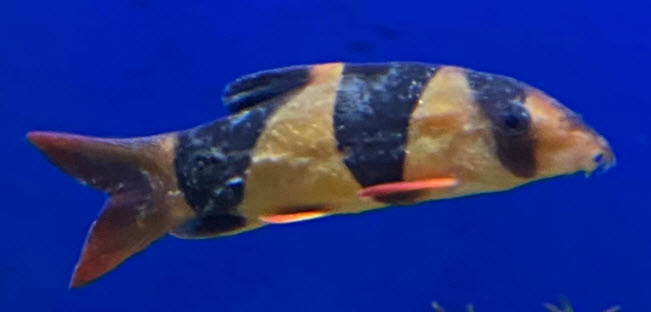
With an old uncleaned filter more than two months old or so, the filter is “mature” and has a good coating of brown “gunk” on it. This brown gunk will have a ton of epistylis organisms (and other organisms much like epistylis) in it eating the bacteria in the water. The epistylis in the filter will eat so much of the bacteria in the water column that there will be not bacteria for epistylis organisms on a fish to eat and reproduce. So epistylis will not appear on a fish.
This disease prevention by an established, mature filter is a very important feature in all aquariums. It is why the experts keep emphasizing how a mature aquarium is so much more healthy than a newly set up aquarium. This is why it is so important for newcomers not to take things too rapidly. Add small numbers of small juvenile fish to any new aquarium. Go slow! And do not clean or change the filter unless the slow flows down.
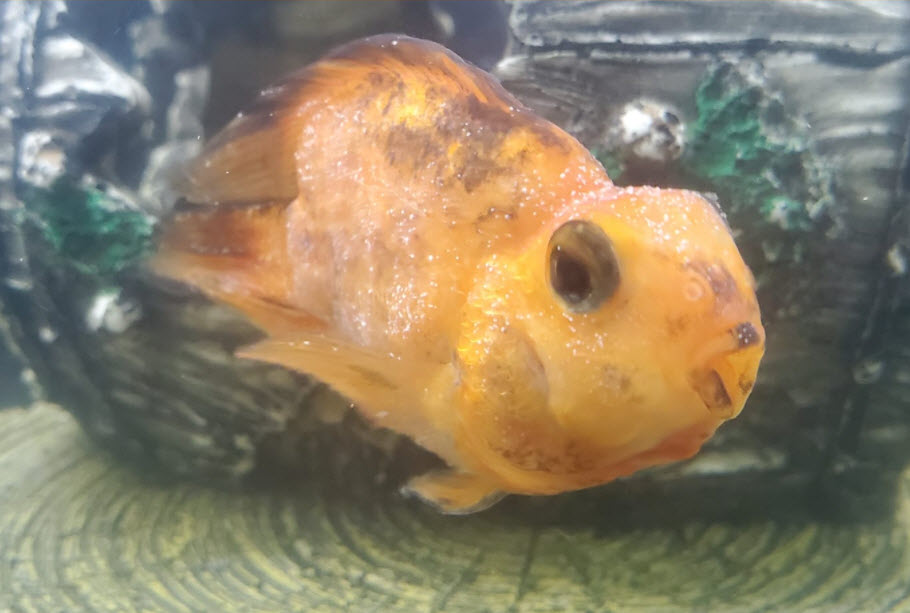
References:
The parasite Epistylis gets far too little attention in the literature despite its relatively common appearance in our ornamental fish. The disease appears as whitish or off-white tufts of fluffy growth that spring up all over the affected fish… Most often the fins and eyes are affected, and the owner mistakes the pathogens for fungus (Saprolegnaceae) because fungus infections also appear as tufty whitish growths.
E. L. Johnson, p 54:
Johnson then has a picture of the tufts. The tufts or colonies of epistylis are about 0.5 to 2 mm high and white. Here is one photo found of them at roughly 50 x magnification.
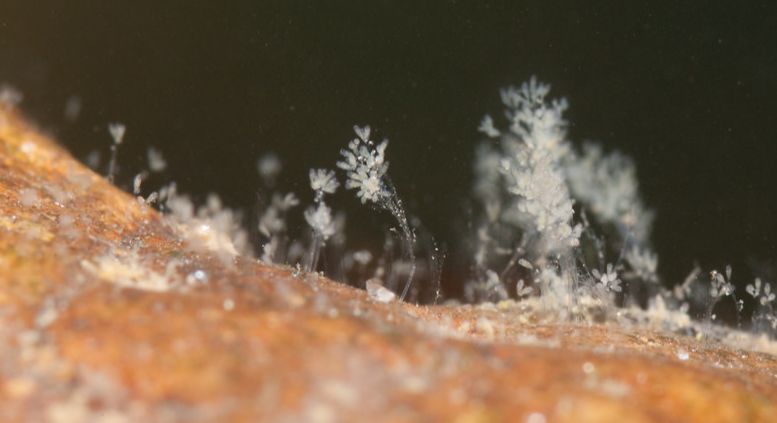
Epistylis is the most common and pathogenic type of sessile, colonial ectocommensal ciliate. It is commonly associated with a mixed infection of gram-negative bacteria known as red-sore disease (Esch et al. 1976). Like other ectocommensal protozoa these organisms feed on bacteria and other small food items present in the water. They use the fish as a surface for attaching. Thus, their presence is indicative of organically polluted water that would tend to have a high concentration of bacteria.
Per Noga p155-156:
Noga is correct on the “organically polluted water” comment. If one has water with a high bacterial count this organism can thrive since it is a ciliated filter feeder and water with a high bacterial count feeds the ciliated organisms. And the term “ectocommensal” means an organism that lives on the surface of another “host” organism without harming the host organism.
Note that there are some other closely related ciliated organisms which might occasionally be seen and present exactly the same way as epistylis. These include Apiosoma, Scopulata and Ambiphrya. They are for all intents and purposes identical to epistylis so making a distinction isn’t important.
White Tufts on the Forehead
There is a YouTube video where an individual shows a video of an angelfish in his aquarium . The angelfish has some white dots on the forehead. The YouTube video maker is identifying these as epistylis. This is not epistylis. This is a disease called “canal neuromast inflammation”. It is how hole in the head manifests itself, typically in small cichlids.
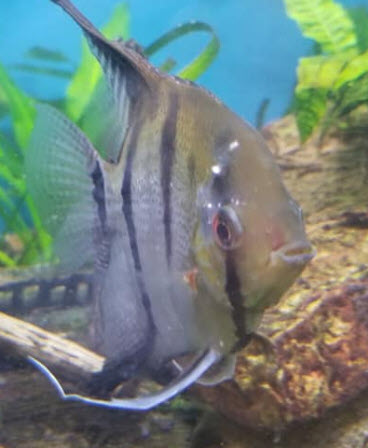
More details on this disease can be found on the following link:
11.1.2. Canal Neuromast Inflammation or White Spots on Forehead
.


